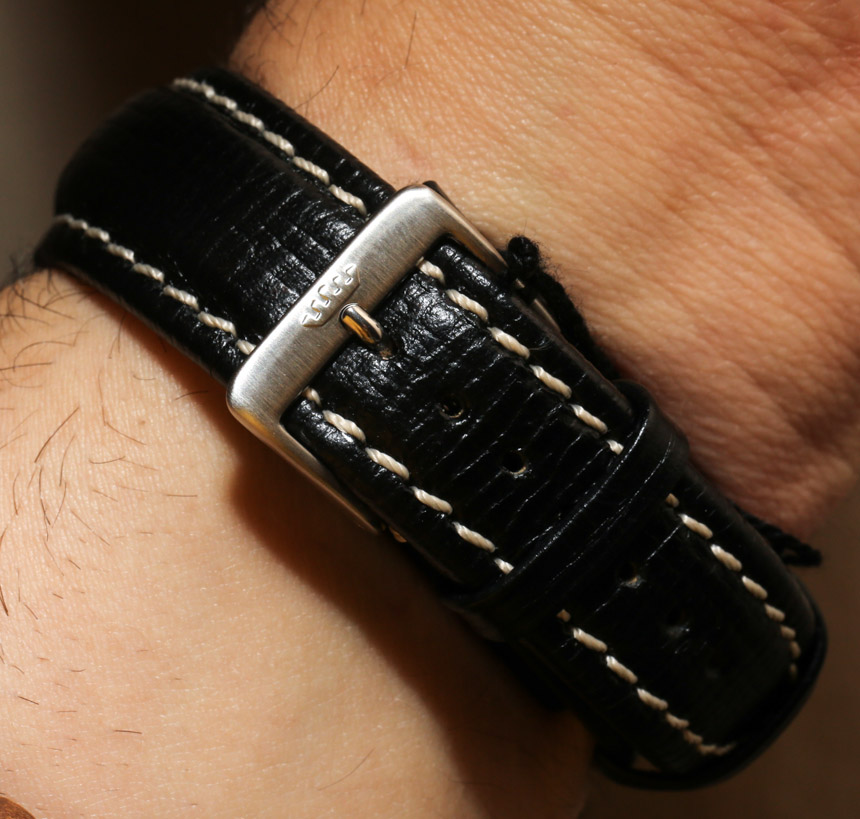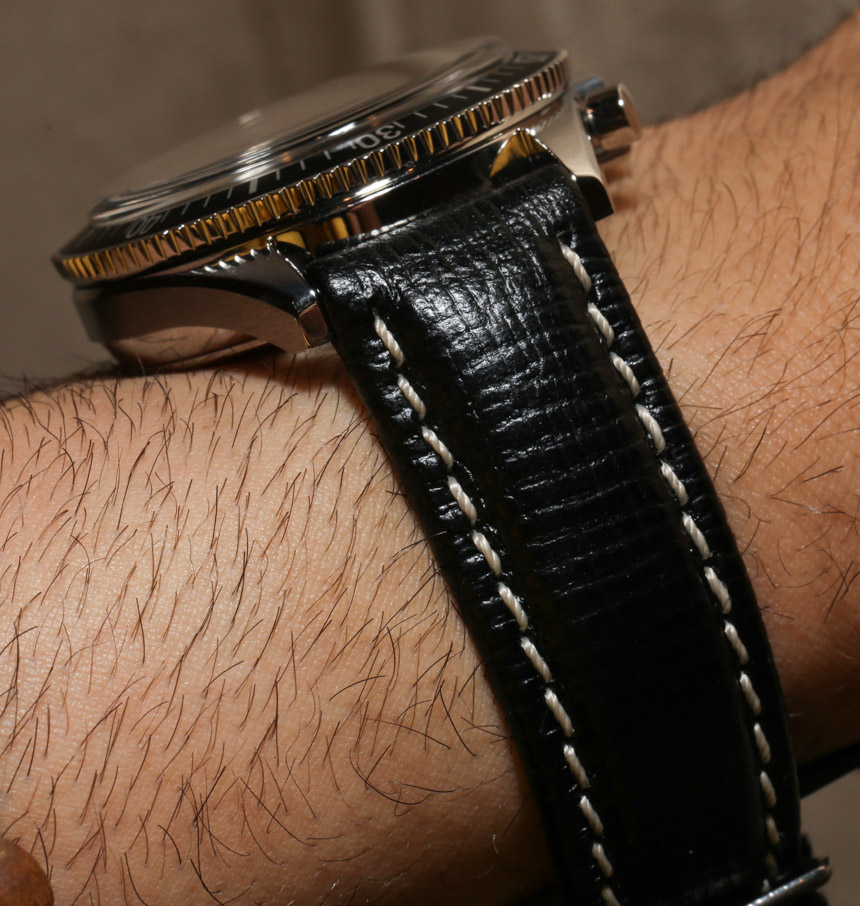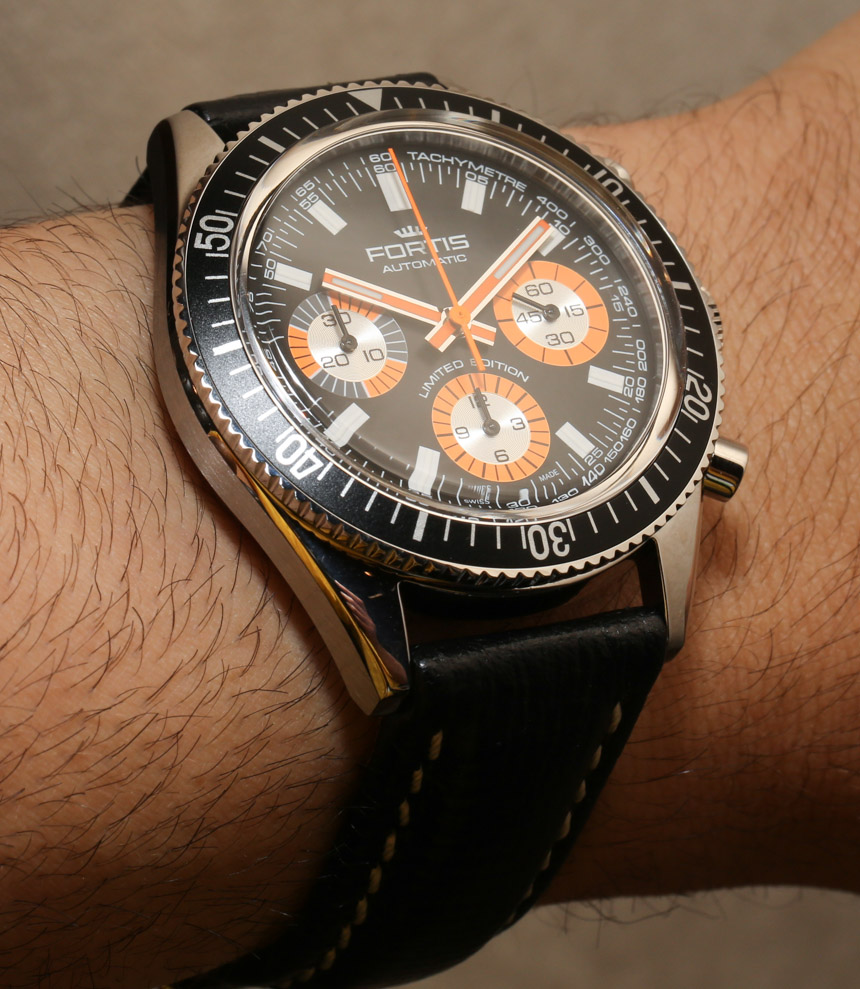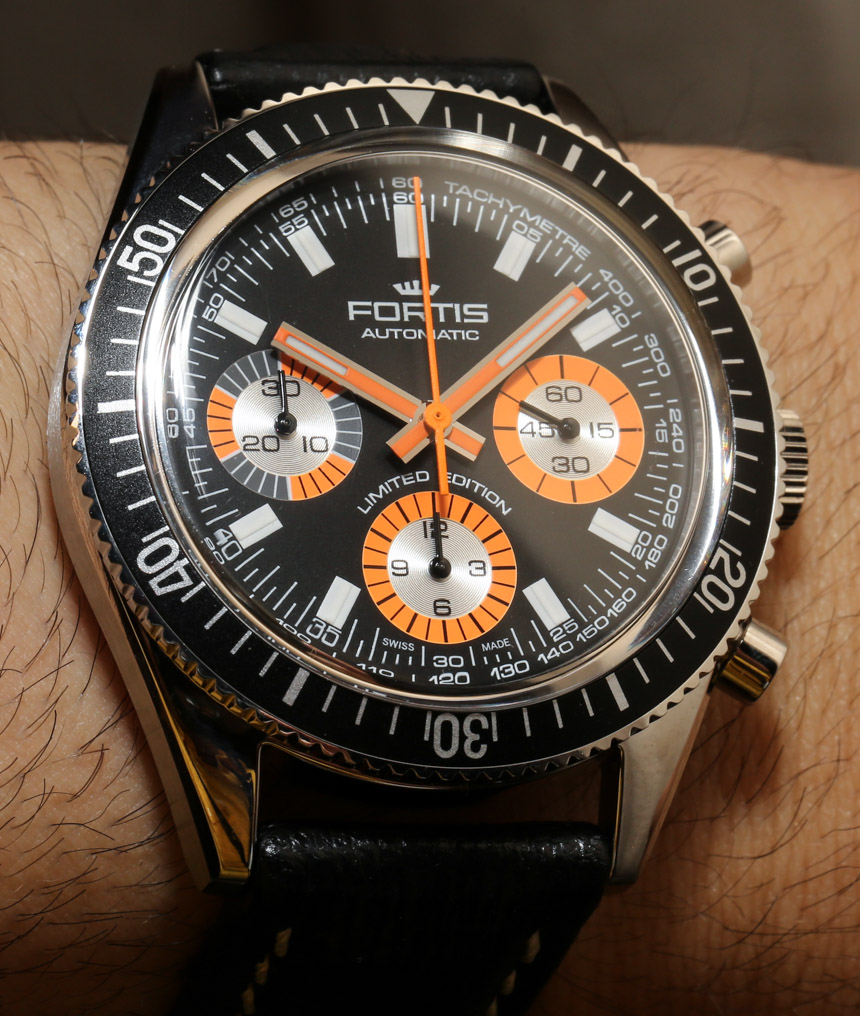
In 2012 Fortis released this lovely “Vintage” edition of the Marinemaster (that we first wrote about here). It troubles me a bit when brands use the term “vintage” as applied to a new watch. Is it just me or does that cause unnecessary confusion? What for example do you call the actual original Fortis Marinemaster that this timepiece is based on, the “actual Marinemaster Vintage?” I’m not entirely sure. Despite my meticulous focus on the meaning of words, I was glad to finally get a hands-on look at these watches. Limited to just 500 pieces in each of the two colors, in a few years these are going to be rather tricky to find.
You really don’t have too many new Fortis watches in all polished cases. That is one of the first things that stood out to me as unique about the Marinemaster Vintage (well it isn’t 100% polished). While brushed or sandblasted watches can look great, it is hard to resist the shiny appeal of a glossy piece of polished steel (or maybe gold for you extravagant types) on your wrist. So here you have it, a vintage-styles sport chronograph with a polished case and some color. The best way to enhance the look of polished areas is to place them next to non-polished areas, which Fortis does properly as the Marinemaster Vintage has brushed sides to the case. From the top or bottom it is all polished.
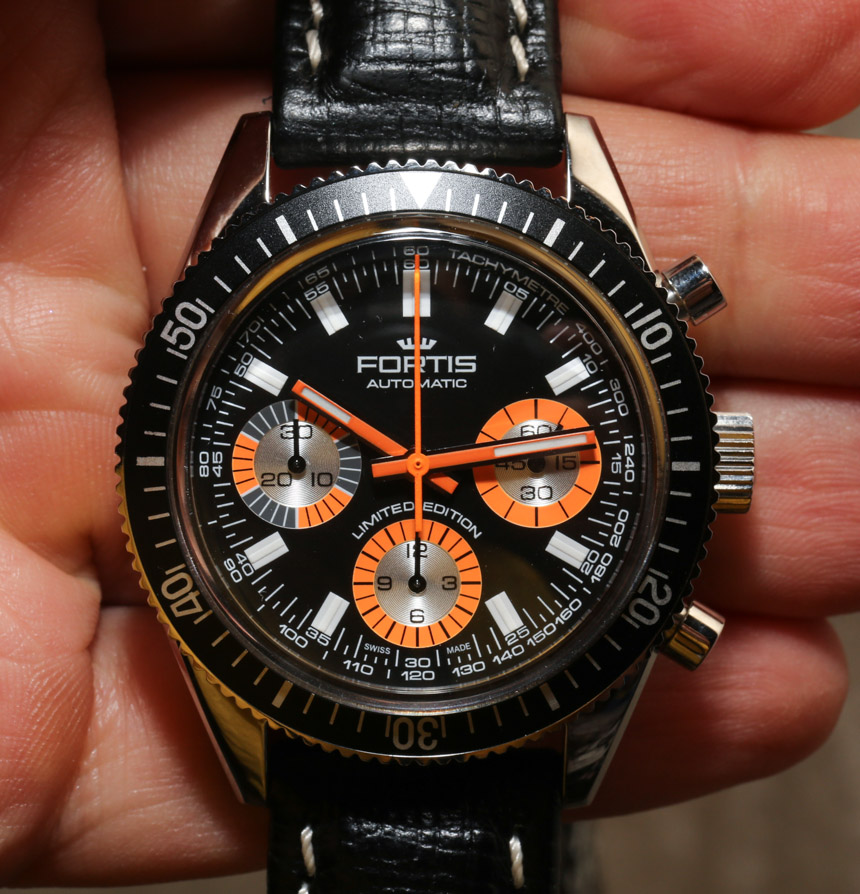
What many people will no doubt like are the mid-sized dimensions of the case. At 40mm wide, this is a rare item these days when it comes to a timepiece of this ilk. 42mm, 44m, or larger sport chronographs are easy to find, but a nice modern 40mm wide chronograph can be challenging to come across… I mean other than the Rolex Daytona. At about 15mm thick, the Marinemaster Vintage isn’t a small watch, but it does have a more comfortable stance on the wrist that I like. This Fortis doesn’t feel like a small watch though. Longer lugs and a rotating bezel that is not too thick helps keep it feeling reasonably sized.
There are a number of little details on the watch that help it feel vintage in addition to just the name and dial design. The polished case is one of those things for sure. Others are the simple piston-style chronograph pushers, as well as the glossy leather strap. Actually, the strap is nicely padded and looks quite fantastic. The contrast stitching is nice as well. One vintage element on the watch which some people will like and others will not is the acrylic crystal. The look of domed acrylic crystals is mimicked a lot today by sapphire crystals, but it is pretty uncommon for new high-end watches to have acrylic crystals. Though some people love them.
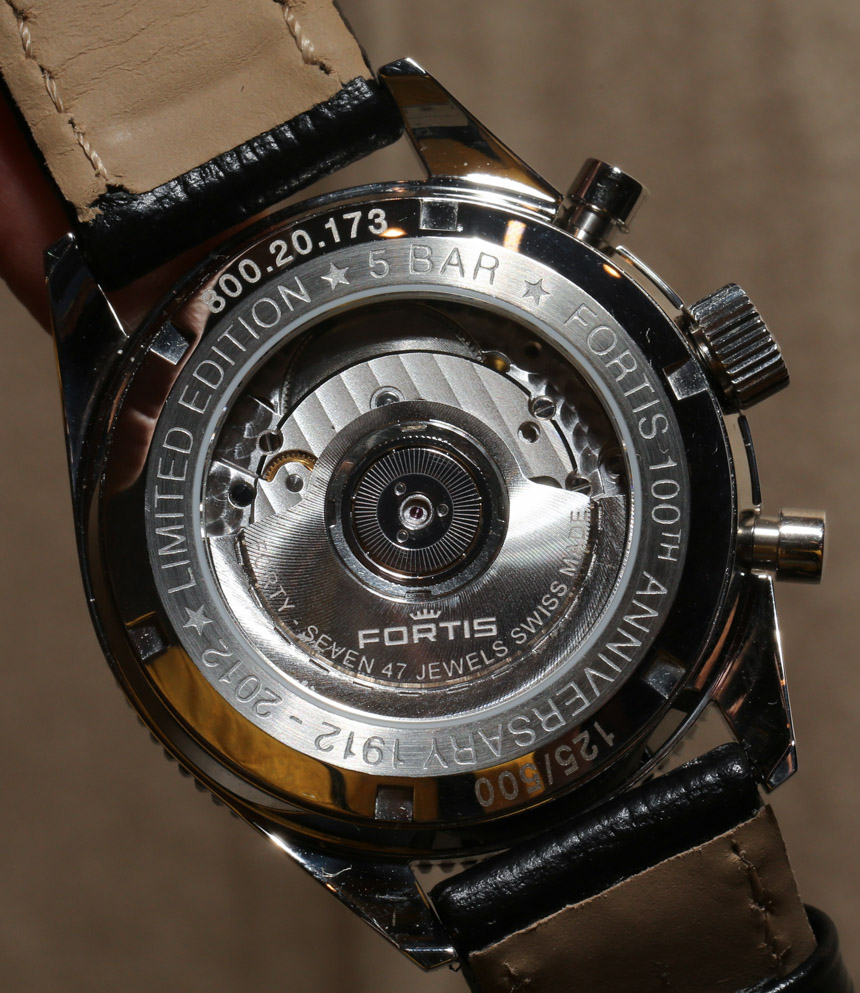
Acrylic has some pluses and minuses. Sapphire crystal is much more scratch resistant, and tends to be a bit clearer, though high-quality acrylic is pretty clear. Acrylic is hard, but it does scratch. The good news is that acrylic crystals can be cheaply and easily buffed out, and replaced very cheaply. Sapphire crystals must be replaced if there is an issue with them, and they of course cost more. The display window to the movement on the rear of the watch is however not acrylic.
Dial-wise you have a traditional 1970s Fortis Marinemaster design. Note the blocky elements as well as bright, high-contrast colors on the dial. This is 1970s sport watch incarnate right here. Fortis released both this orange tinted version, as well as one in blue. The dial is quite legible and I like the squared hands. While the hour indicators are nicely lumed, there are only thin strips of luminant on the actual hands. Around the periphery of the dial is a tachymeter scale. I doubt even in 1970 people were using these, but a lot of chronographs feel inclined to include them.
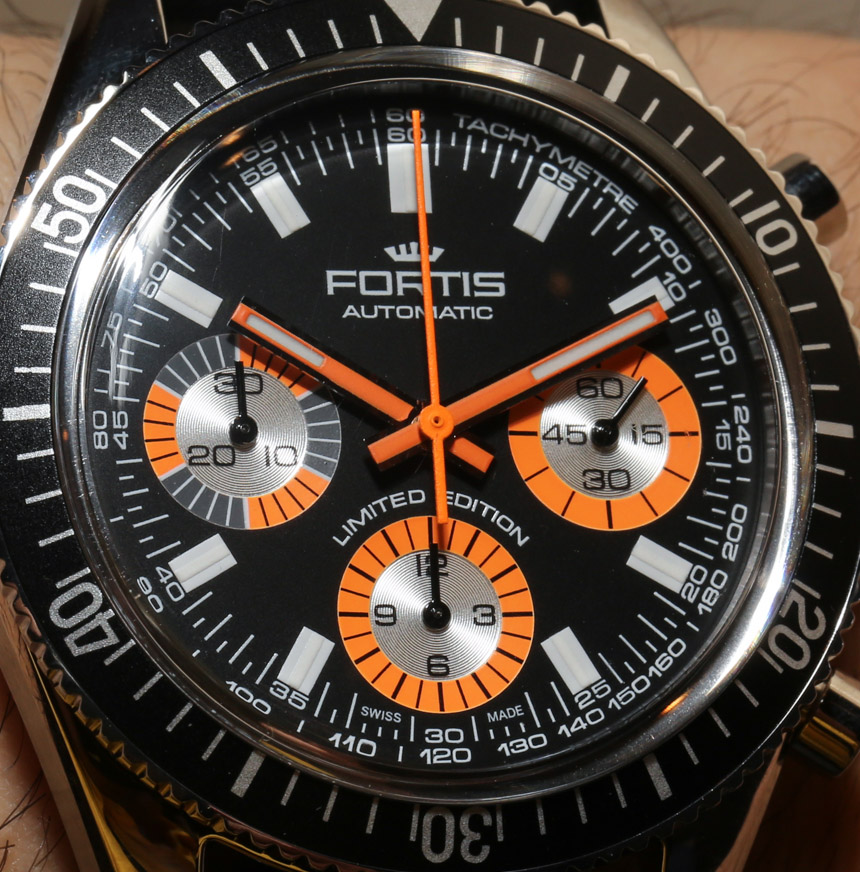
While the name of the watch is Marinemaster, this piece isn’t a dive watch. Fortis has other options for you when it comes to that. The piece is water resistant to 50 meters, so we don’t recommend swimming with it. In true retro fashion, the rotating timing bezel has an aluminum insert ring. Though, it should work nicely as a sport watch. Honestly, this is a very pretty timepiece and I think a lot of people will be able to enjoy it.
Inside the watch Fortis uses their caliber 2020 automatic movement. This is a base ETA 2892 with a Dubois Depraz chronograph module on it. So you have the time and 12 hour chronograph as complications. In a purist fashion the dial does not contain a date indicator window – which while sacrificing a bit of functionality does lead to a very attractive and clean looking dial.
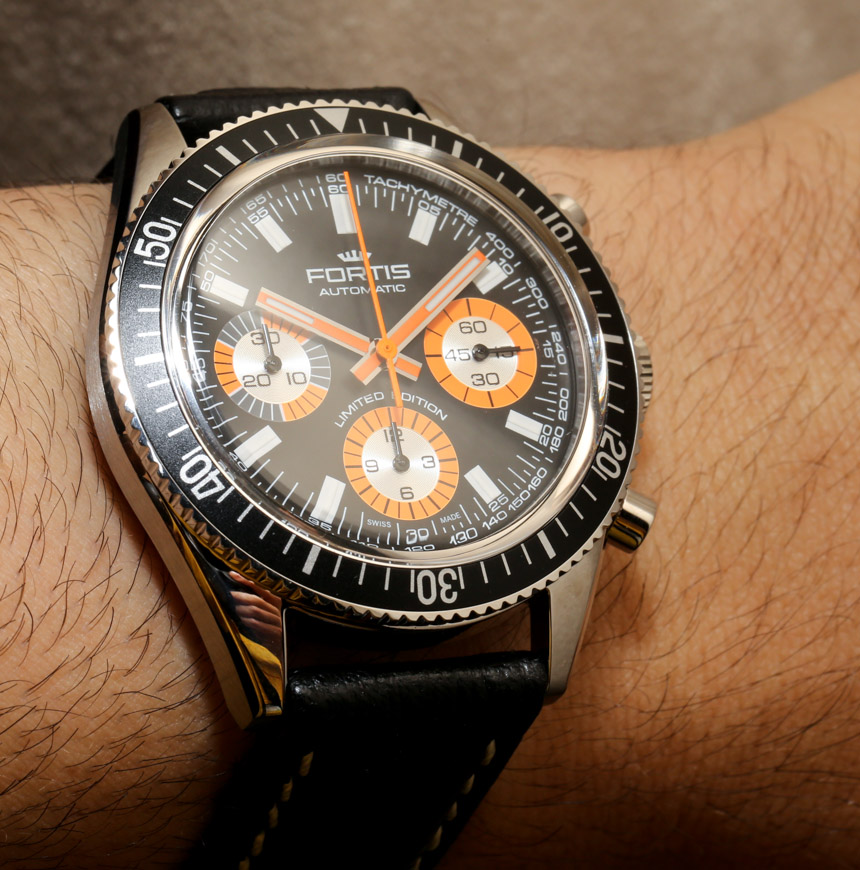
In addition to the Marinemaster Vintage being a “retro-redo,” it is part of Fortis’ 100th anniversary collection as the brand turned 100 years old in 2012. That little fact is indicated on the rear of the watch. An interesting tidbit of information for collectors. In total, 1000 pieces of the Marinemaster Vintage (ref. 800.20.80 L.01, aka 800.20.80 L) will be produced. That is 500 pieces in orange and 500 pieces in blue. Price is $4,600. fortis-watches.com

